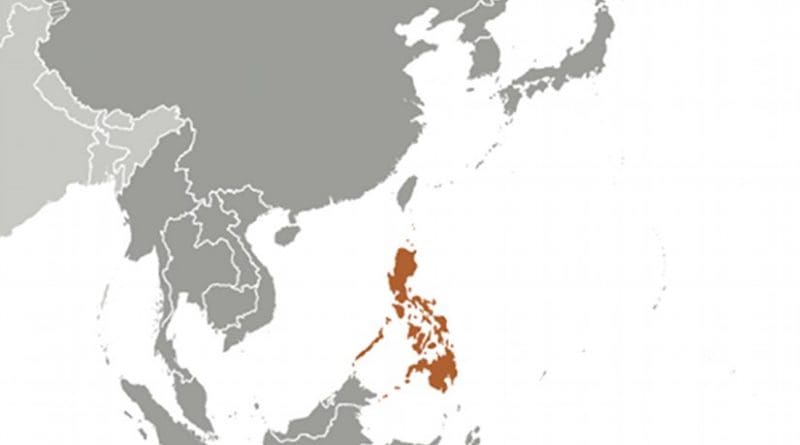MILF-GPH Peace Agreement: Challenges For The Philippines – Analysis
By SAAG
By Amruta Karambelkar
The latest peace agreement between the government of Philippines and the Moro Islamic Liberation Front (MILF) on 15 October 2012 is being widely hailed as a landmark covenant in ending the four decade old insurgency. A new autonomous entity called Bangsamoro will replace the existing Autonomous Region of Muslim Mindanao (ARMM) as per the understanding. Evidently both sides have considerably compromised on their demands. However, challenges in the near future are daunting and both remain sceptical of each other. This commentary reflects on the tasks that these parties face in the near term.
The Aquino administration has set the time frame of four years to implement this agreement and establish Bangsamoro. This is challenging for a variety of reasons. First, meeting the deadline would require detailed and comprehensive planning on rehabilitation. It will have to begin with the assimilation of insurgent forces – on which the current agreement does not give details. It is crucial that elaborate strategies on decommissioning of insurgent forces find place in the signed pact. Second, the government will need a road map specifically on the development of Bangsamoro. Bangsamoro would have discretion in revenue generation and utilisation of resources, but that cannot be an end it itself. National government will have to invest in capacity building and governance; else there may be a situation where only a few (the elites) will enjoy the benefits.
Meanwhile, a transitory Commission will have to be formed to overlook the peace process until the Bangsamoro is established (by 2016). This phase would be crucial as the developments during this period would determine the success of the peace process. Precedents have shown that during the transit phase rebel groups tend to re-arm themselves, some organisations even witness emergence of factions. What if the MILF undergoes similar developments? Although the present agreement is not exclusive to MILF and other Muslim insurgent groups have also welcomed it, there could be a scenario where some groups may try to scuttle the process driven by disagreements on power and wealth-sharing amongst insurgent groups. There could be other actors also, affecting the transition. A report by the International Crisis Group identifies provincial governors, Christian settlers and conservative nationalists as spoilers of the peace process. It is yet unknown, if and in what capacity the government has taken these groups on board. Nonetheless these factors should be considered while carving out power-wealth sharing arrangements.
As for now, first and foremost the agreement needs to be signed after which it should be passed in the national assembly. A plebiscite should follow to ratify the new autonomous entity and to include extended territories within. The last part is an important determinant since it can also derail the agreement. Plebiscite would determine the actual territory of the Bangsamoro as if any of the newly proposed localities refuse to join in (as a result of mobilisation by vested interests) it would hinder the Bangsamoro entity that MILF envisioned. It is worth recalling that agreements in the past had failed because the ARMM did not expand to MILF’s territorial demands. Likewise, the support of local governors to the implementation of the agreement is very decisive. The provincial governors and local elites have little faith in MILF. More autonomy to the MILF would compromise on the privileged relation these governors enjoy with Manila. Any contestation between these elites and MILF can lead to the latter falling out. Most significantly, the MILF has declared to give up arms only if its political demands are met.
Besides, certain legal issues may surface over this agreement. Philippines’ constitution is largely unitary in nature, therefore there is a debate over the constitutionality of this agreement. Some politicians are worried whether the creation of autonomous entity would require a constitutional amendment, while others rule out such a possibility on the grounds that the nature of the proposed Bangsamoro is consistent with existing legal provisions on autonomy hence it can be easily accommodated as an autonomous region and not a sub-state (MILF had earlier demanded status of a sub-state with constitutional guarantee, which is suspended). However the picture will be more clear when the details of the agreement are worked into.
The role of the incumbent president should also be critically looked at. President Aquino has vouched to end all insurgencies before the end of his tenure in 2016. It may not be a realistic time frame, considering the complexities involved. Could this peace deal be then a desperate attempt to fulfil the election promise? The agreement alone will however not bring peace which is essential for any further economic development. The enthusiasm is understandable but any hurried step could cause irreversible damage. Finally, it is important that all parties remain cordial and sincerely committed to the accord.
Amruta Karambelkar
Research Officer, SEARP, IPCS
email: [email protected]

